Link's Not Dead...It's Worse
Re-Analyzing the Majora's Mask Theory
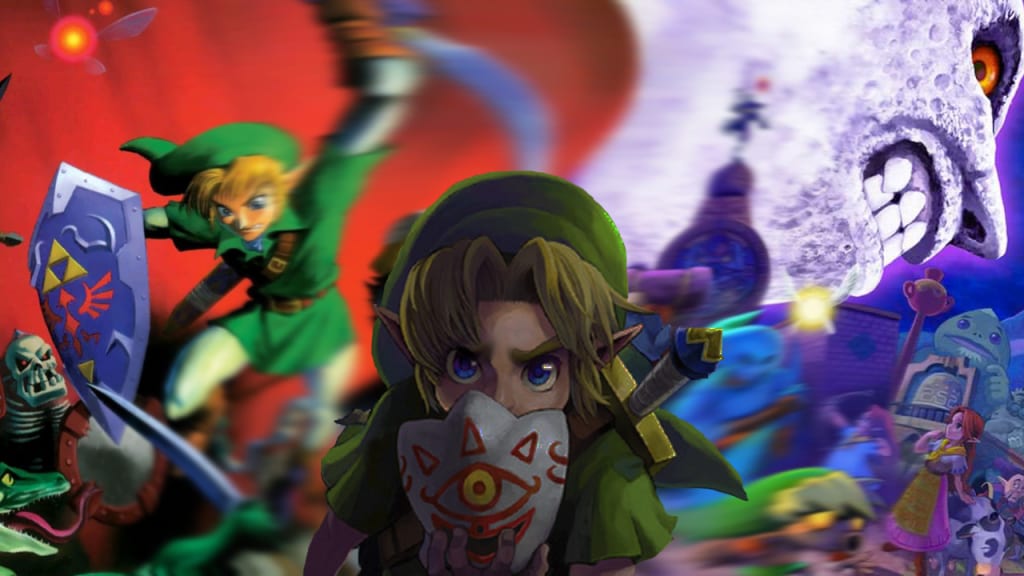
Majora's Mask is a pretty interesting piece of Zelda history. The 2000 title is just otherworldly enough to inspire theories left and right.
And by "theories," I mean "usually only one theory."
And by "one theory," I mean "the Link Is Dead Theory."
If you clicked on this article, you probably already know the gist. Link is dead or something and Majora's Mask is just him going through the five stages of grief. Again, it's been rehashed and disproven from here to the moon.
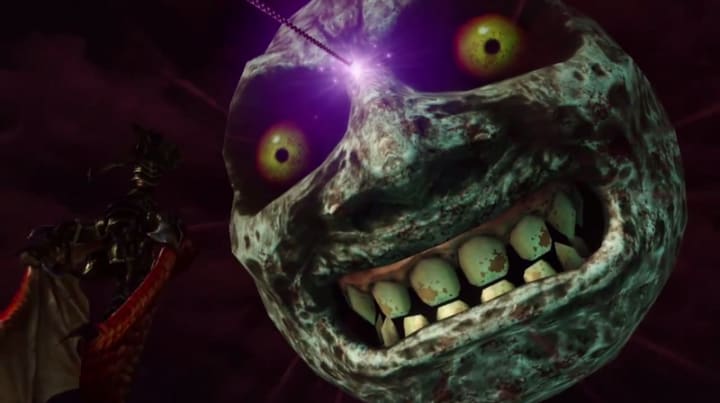
The pity here is that a surprisingly-psychological game like Majora's Mask can actually offer multiple interpretations and be seen as an exploration of themes other than death.
One such theme– trauma.
Consider this. What if Link was traumatized by the events of Ocarina of Time and Majora's Mask is him going through it?
Maybe Skull Kid/the titular mask cursed him to confront manifestations/hallucinations of his trauma during their first confrontation. Maybe he's just sitting or wandering around in a delusional state or something to that effect. Or maybe he's having a nightmare; Link pretty much starts every adventure waking up.
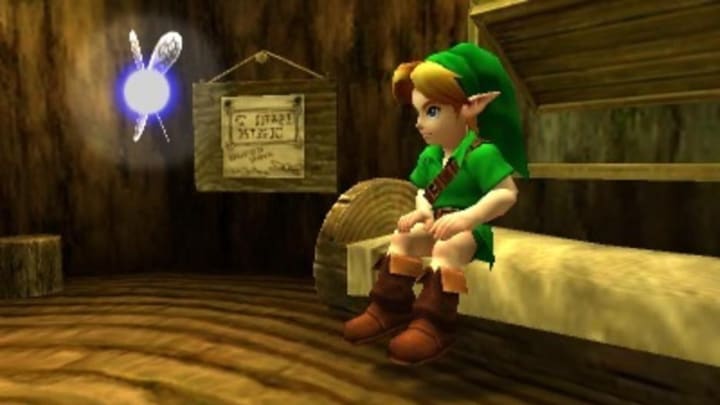
Either way, saving Hyrule left him with a lot of baggage and Majora's Mask is his metaphorical journey of making peace with his pain, still very much alive.
So, get comfy and grab some snacks, reader. This is a long one.
EXHIBIT A: Link Has EVERY Reason to Have PTSD

Already ostracized because he didn't have a fairy, Link starts his nostalgia-inducing adventure by witnessing the Deku Tree- AKA, his floral foster father- die. Mind you, this is after Link tries helping him and before Link is outright blamed for the death by his head tormentor.
Link's, like, ten or something.
After this, he shuffles off into a world filled with monsters and stuff; a world the Deku Tree told the Kokiri that they would die if they set foot into it. His rousing adventure pits him against a bunch of fire-breathing dinosaurs and a rogue electrified appendix, capped off by witnessing a takeover by a huge mystic guy that strait-up assaults Link. A takeover that Link himself accidentally helps by leading Ganondorf into the Sacred Realm.
And again, he's like ten.
I don't know about you, but you couldn't even get me to go into the basement when I was a kid. And I doubt there's any age that makes your brain immune to the horror of being humped by a naked, moaning zombie.
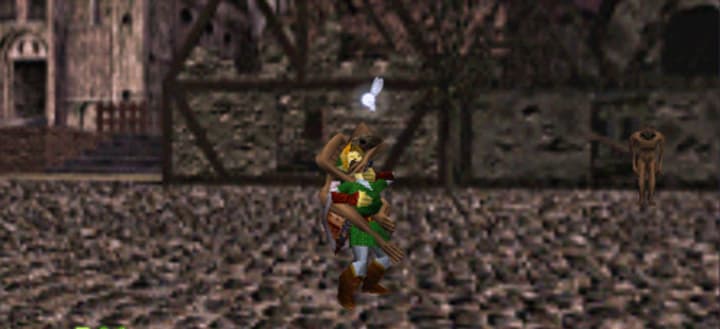
Speaking of, the adult part of OoT is where the trauma train really kicks off. The question of whether of not Link is still mentally a kid aside, he now has to face a Hyrule that had become warped because of his mistake. New destinations include:
- A forest temple that looks an awful lot like a haunted house, complete with ghosts and severed hands falling from the ceiling
- Literally the inside of an active volcano
- The pinnacle of frustrating level design that is the Water Temple
- A necropolis of undead creatures and torture equipment...after a detour through the local well system/underground death cavern
- The Spirit Temple in the middle of a harsh desert desert...but you probably weren't paying attention because you're still thinking about the aforementioned city of the dead
And in the end, Link is sent back to his child years to relive his life...and not a single shrink in sight.
And again...he's like ten.
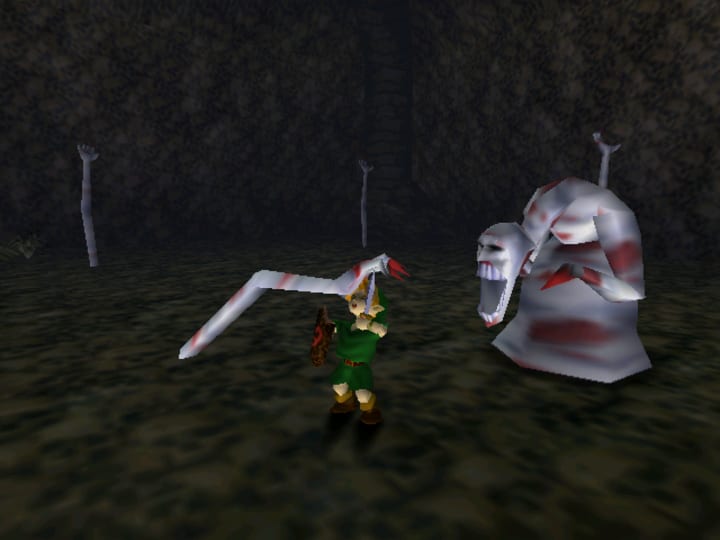
Brief note– Link himself actually displays some symptoms of PTSD:
Okay, over-observation aside, lets start getting to the good part: all that delicious symbolism.
EXHIBIT B: Woodfall Represents Kokiri Forest and Link's Isolation

The only thing worse that being isolated by the people you grew up with? Finding out that you weren't one of them to begin with. Which was very much the case with Link and the whole "Hey, you're not actually a Kokiri, but a Hylian that was left to be raised by a tree" thing.
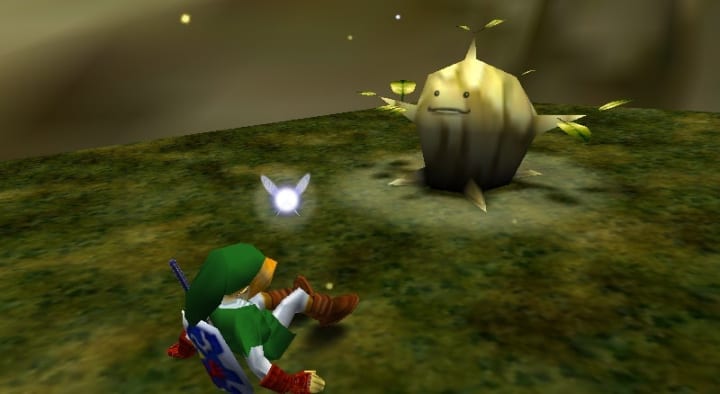
But it can't get any worse, right?
Yes. Yes, it can. Because PTSD and social issues are shown to have a connection. One tidbit from this study–
Overall, research suggests that the link between PTSD and SAD is complex, stemming from multiple factors including a person's genes, history of trauma, and psychological vulnerabilities, like fear of being negatively evaluated by others.
And ooof does that sounds like our boy Link here. And all the more reason that Woodfall symbolizes Kokiri Forest and Link's complex relationship with it.
From the start, Woodfall is toxic to outsiders; quite literally considering that the water is poisonous. What's more, you're not even allowed into certain places- such as the Deku Palace- unless you're a member of their species. Which again, sounds like Link's schtick. He's not from there, he's not one of them, and he should just get out.
And who better to drive xenophobia than a blowhard? Kokiri Forest/OoT had Mido, Woodfall/Majora's Mask has the Deku King.
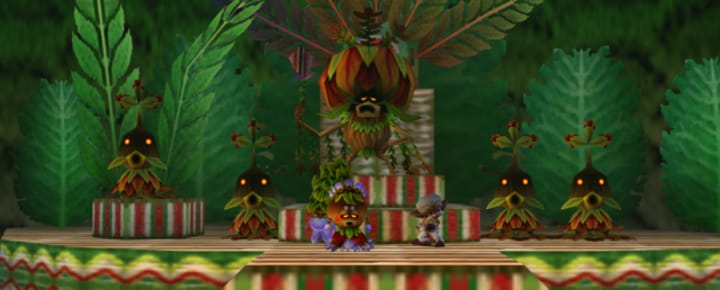
How do both these these jerks like to pass the time? Why, making false accusations, of course! Mido wanted to blame Link for the Deku Tree's death, the Deku King is all about boiling an innocent monkey alive after his daughter is kidnapped!
But wouldn't you know it? The Deku Princess isn't a jerk. In fact, she's the monkey's only ally amongst the Deku. She even taught him a nifty song.
Why does that sound a little familiar?
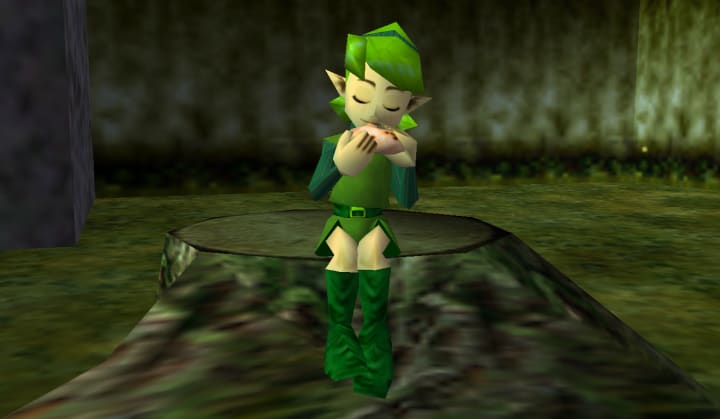
The Deku Princess is a stand-in for Saria, right down to being connected with the local temples and going to investigate them. That being said, the monkey can be seen as a metaphorical representation of Link. Saria was the only one who defended Link, and the Princess outright kicks the tar out of her father for what he did to the monkey. Bonus points considering that, after becoming a sage, Saria is forced to live in another realm. She figuratively becoming trapped within a temple, while the Deku Princess is literally trapped within a temple.
But of course there's the absolute pinnacle of this isolation metaphor is the temple's boss, Odolwa.
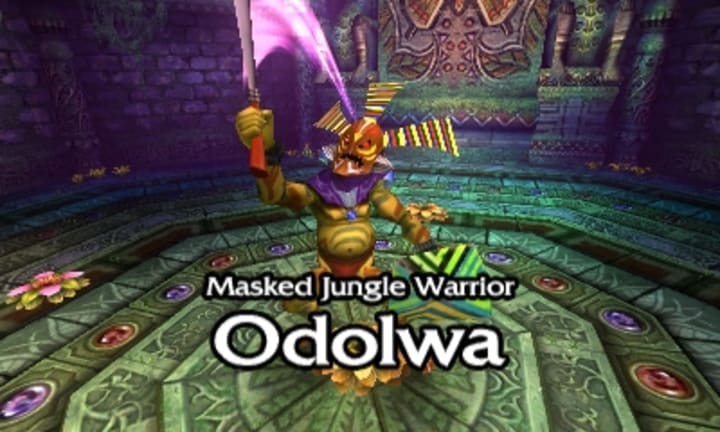
Unlike his fellow bosses who are unarmed, Odolwa fights using a sword and shield. Why is this important? Because there’s two very important items that you can only get in the Kokiri Forest: the Kokiri Sword and the Deku Shield.
But similar equipment isn't the only things Link and Odolwa share. If one takes a look at the fight, one might notice that Odolwa actually fights very similarly to Link. He blocks hits with his shield, can jump swipe forward, and even performs a spin attack.
One huge difference? Unlike Link, the forest has Odolwa's back, right down to sending reinforcements like bugs and moths.
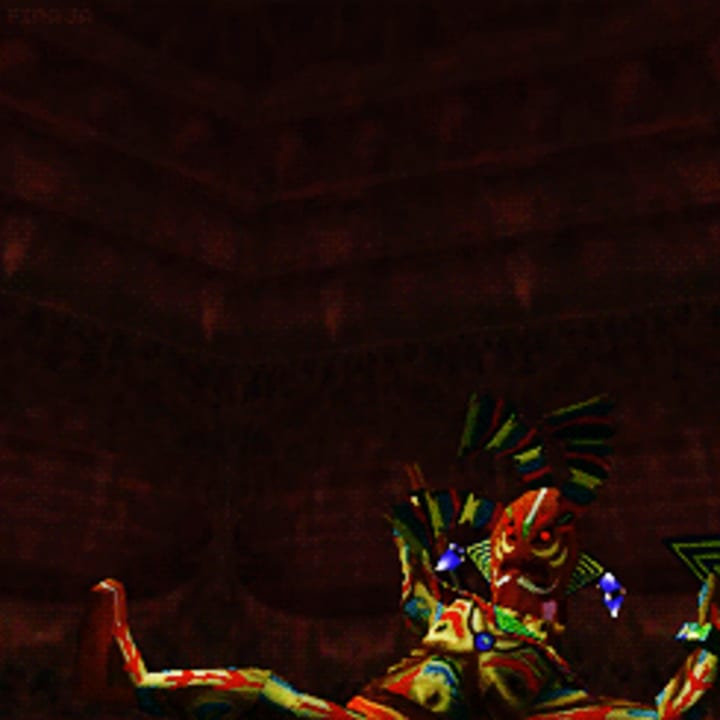
Link doesn't belong in his forest, but Odolwa belongs in his. At least, that what Link believes. But once he slays this manifestation of doubt, Woodfall becomes a much more welcoming place.
EXHIBIT C: Snowhead Represents Death Mountain and Link's Emotional Numbness

Ahhh, the Gorons! The manliest species to ever man in Hyrule! Living in active volcanos, eating rocks, beating dragons with hammers! If there was a lab accident involving boulders, testosterone, and an playlist of folk music, these guys would likely be the end result.
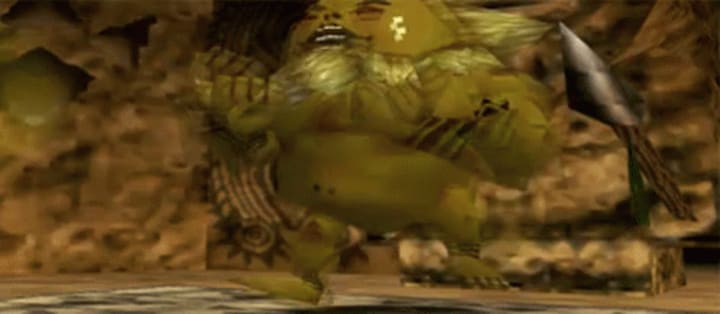
So, what do these rocky riverdancers have to do with Link's psychological romp? Well, it mostly has to do with how they're presented in the games.
In OoT, you were a bit aggressive on how you helped the Gorons. Food shortage? You blew up dinosaurs! They're trapped in cages? You let them out and assume they get out of the Fire Temple just fine! Dragon's attacking you? Hit it with a hammer! All explosions! No mollycoddling!
But in Majora's Mask? Quite the opposite. In addition to the winter cold, the Gorons' biggest threat isn't something like dinosaurs or dragons. It's- of all things- a crying baby.
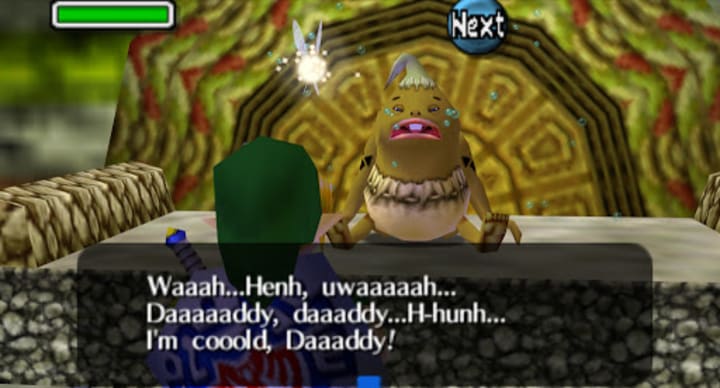
The entire village has no idea how to calm it down, and are more or less at the child's screaming mercy. So you have to hunt down the oldest Goron and learn part of a lullaby, which is perhaps the least macho sort of song in existence. (Well, outside of the Backstreet Boys.) And this same lullaby is what you use to get past the biggest Goron in the game in order to get into the Snowhead Temple. And in between this, you're warming, feeding, and otherwise nurturing Gorons; a very far cry from OoT's Gorons.
Why is this so important? Because studies have shown that PTSD has an effect on one's own views of what it is to "be a man." One such quote–
“Overall, we found that strict adherence to masculine norms was associated with more severe PTSD symptoms in veterans, but more detailed analysis suggests that the association may specifically be caused by the veterans’ belief that they should control and restrict their emotions. In other words, they should be tough,”
After the smoke cleared in OoT, it's possible that Link saw fit to suppress his emotions and "be a man." And what better metaphor for that than the Gorons?
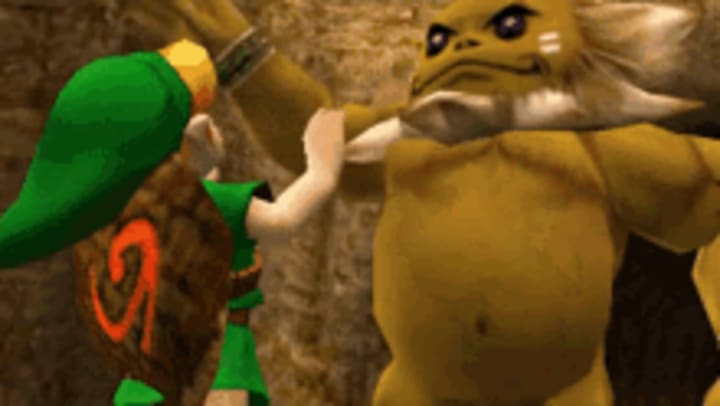
Your Goron form- the late warrior Darmani- is a reflection on the negative aspects of OoT’s Goron leader Darunia. The last time you see Darunia, he’s become the Fire Sage, meaning that he (as far as we can tell, anyway) has to leave his people leaderless (and his young son fatherless). As Darmani (who looks a lot like Darunia), you seek out the leader of the Snowhead Gorons, who also left his people/son in a similar predicament to Darunia’s crew. In the Goron Elder’s place, you help them in ways the oh-so-"manly" Darunia didn’t with his people.
And the fact that Snowhead is covered in ice can itself be a metaphor. Like the study said, PTSD victims can numb themselves. Snowhead has become numbed by this abnormal winter, the treasure you're given here- the fire arrows- being used to thaw/un-numb things.
One of these things you thaw out being a mechanical goat by the name of "Goht."
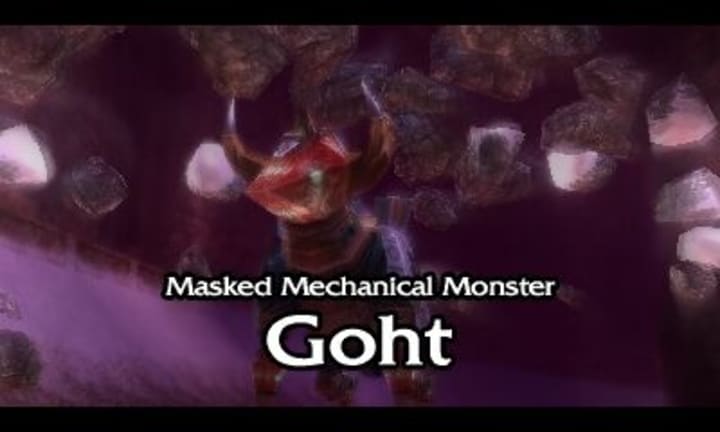
Oh, where to begin with the symbolism here?
First of all, you find Goht frozen in ice; probably as numbed as something could get. Once you thaw him, he doesn't attack you like other bosses. No, he runs away from you, and you have to chase him down. He's trying to ignore you; trying not to care about you. And that's before you realize that he's a machine designed to ram things. That nature alone is metaphoric for stunting your emotions and "manning up." Of being the emotionless warrior that Link thinks he has to be.
And...uh...there's also the matter of the...ahem...questionable imagery of the temple itself.
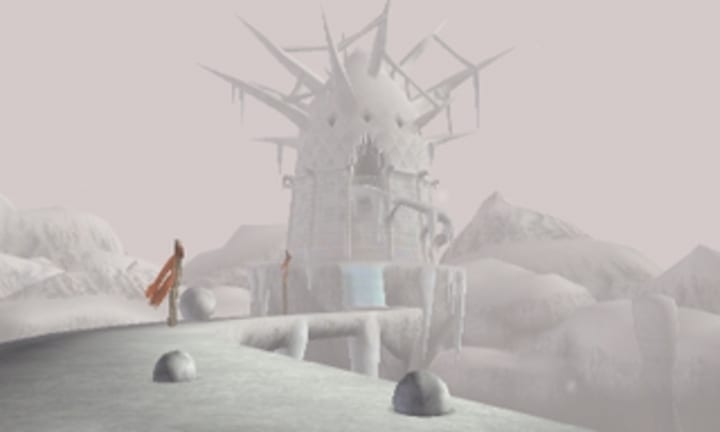
...Well, it is called Snowhead.
...Just saying, is all.
EXHIBIT D: The Great Bay Represents Zora's Domain and Link's Romantic Perceptions

Well, if there's one thing Link was never short on, it was admirers. One of which being a certain Zora princess by the name of Ruto, who- like many dark corners of the internet- believed that she was engaged to Link.
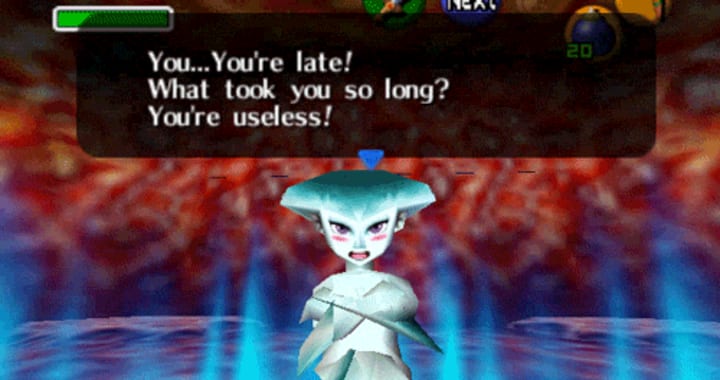
Honestly, this engagement pretty much comes out of nowhere. At least, for Link, anyway. (Seriously, what part of "Hey, the Zora's Sapphire is an engagement ring" is so hard to understand?)
You know what relationship is also confusing? The one between Mikau and Lulu.
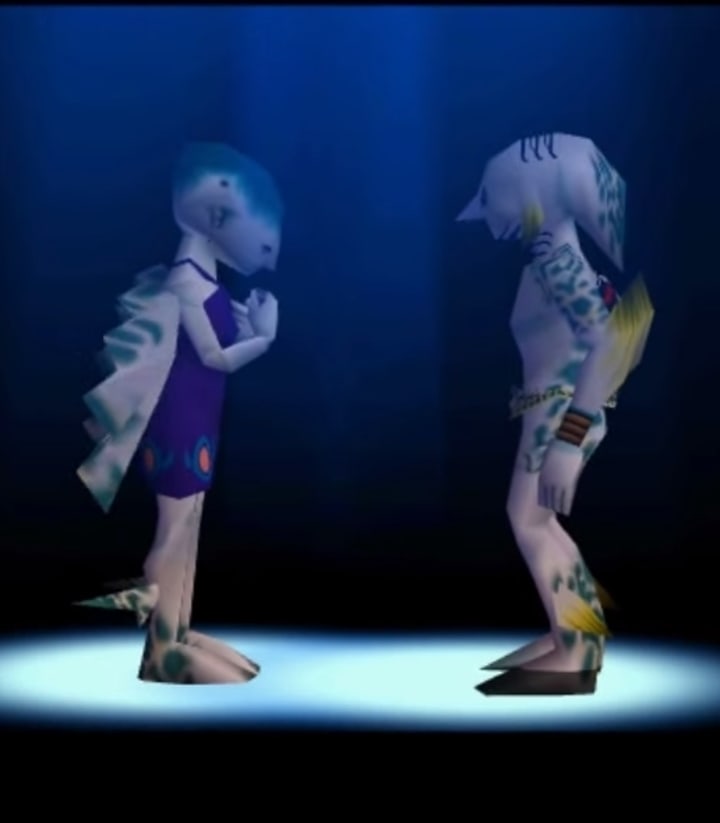
Like...seriously, were they a couple? Was he the father of Lulu's eggs? Because by the sound of it, Lulu seemed like she just laid them out of nowhere. One might be almost as confused as- say- a ten(ish) year old boy who had all the relationship crap thrown at him.
And that's before you consider that- among the many unfortunate side effects- PTSD can have an effect on relationships.
A kid around Link's age might start thinking about relationships. (Or maybe has already.) But when you throw something like trauma in, something as confounding as romance (which is difficult enough for trauma-free adults to understand) might be harder to grasp.
So maybe Link took a look at his (sort-of) relationship with Ruto. As one-sided as it was, it was arguably the most advanced, having reached the engagement stage. And taking this, Link reverse-engineers the relationship by stepping into Mikau's persona. (Which, interestingly enough, is similar to adult Link right down to the filtered audio clips.)
And this part of the journey is surrounded by lots and lots of giant fish. It's the shape of the Zora's home. The shape of their temple. A common motif in both the temple and Zora Hall decor (especially Mikau's room). Even Mikau's grave/guitar is shaped like a fish bone.
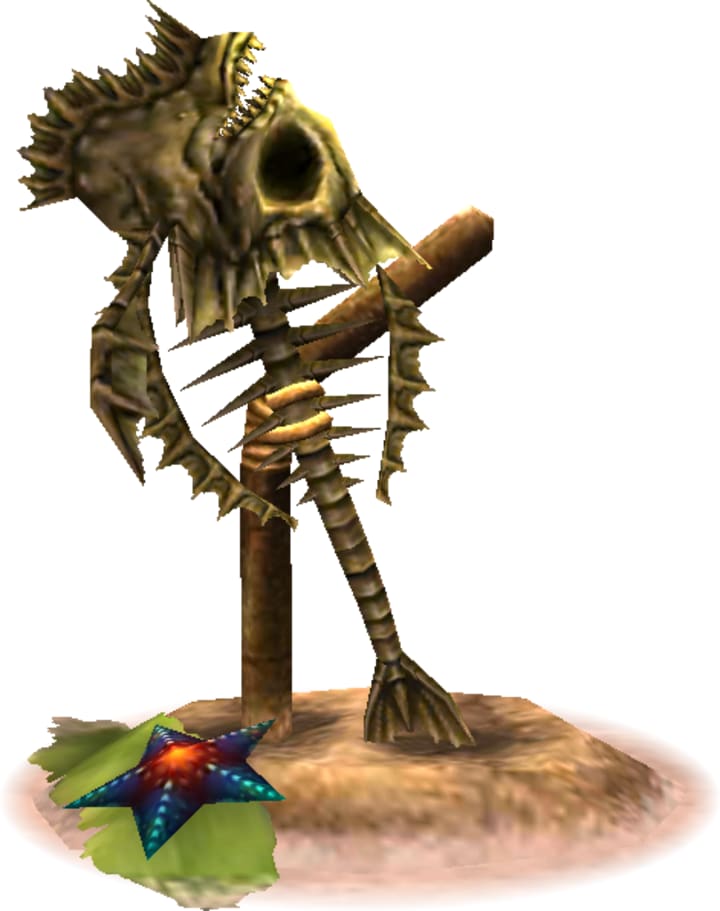
This imagery might not seem like much...until you remember Lord Jabu-Jabu.
Lord Jabu-Jabu was ground zero for Link and Ruto's (sort-of) relationship. Hence why giant fish show up everywhere at the Great Bay. Link keeps thinking about what happened there.
Which is what makes the Great Bay Temple interesting to look within the scope this analysis, because it's a reverse of what you did with Lord Jabu-Jabu.
In OoT, you coax Jabu-Jabu to open up with a fish. Once inside, you fight electrical monsters, take out three parasitic tentacles, save Ruto, and talk to her for all of ten seconds in the Water Temple.
But in Majora's Mask? You have to restore Lulu's voice and spend all of ten seconds with her, then go into the temple. Once inside, you have to restore three pipelines and even provide electricity to the machinery within; the opposite of the threats within Jabu-Jabu.
And the boss? Gyorg. And as you probably guessed, he's another giant fish.
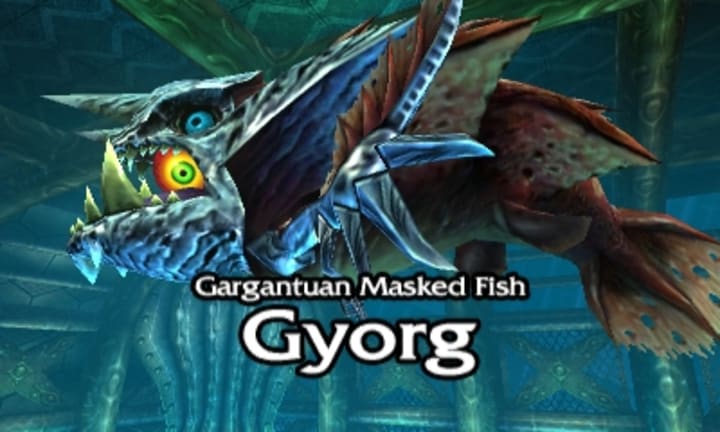
And get this– he attacks by spewing up fish; literally the opposite of the very first thing Link did in his "relationship" with Ruto (feeding the god fish).
Again, not saying that Link did have feelings for Ruto. But maybe- just maybe- he wanted to get some sort of grip on figuring out relationships. Or at least, start one up, because trauma just isn't making it easy for him.
EXHIBIT E: Ikana Valley Represents Hyrule Castle and Link’s Guilt

It goes without saying that a lot of PTSD’s symptoms include things involving bad memories; guilt, nightmares, regrets. Ikana Valley has all these aspects, filled with restless undead creatures and being a generally scary place. What’s more, this place has plenty of eerie connections to Hyrule Castle/its market, which was the site best attributed to Link’s guilt. For one, it's the only place in Termina that has Triforces.
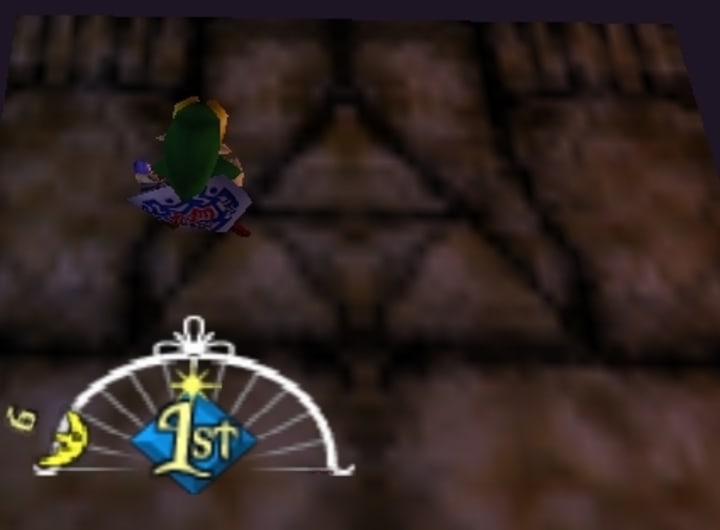
Both Ikana Valley and Hyrule Castle are ruined kingdoms, right down to undead infestations and the only living residents being fascinated with the undead. (OoT had the Poe Collector, Majora's Mask has Pamela and her undead researcher father.)
Speaking of, the event with Pamela and her father can actually be seen as a representing Link's mind healing a little. In OoT, Link basically screwed up the world by playing the Ocarina. But in Majora's Mask, that same Ocarina is used to not only drive away the undead infestation (by playing the Song of Storms), but also healing Pamela's father (by playing the Song of Healing). Music, unlike in Hyrule, is helping rather than harming.
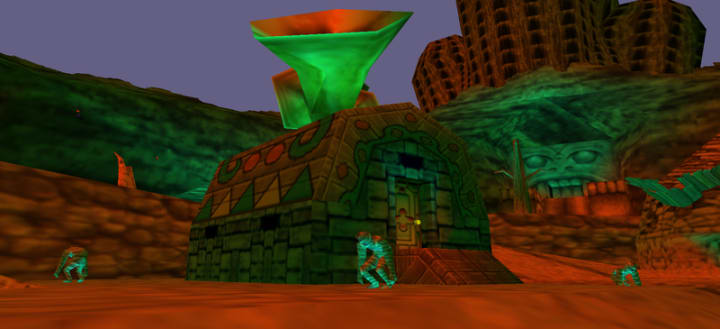
Ikana Valley's dungeon- the Stone Temple Tower- can be seen as a stand-in for the Temple of Time.
Consider this: to get into the Temple of Time, you needed three spiritual stones and the Ocarina of time. To get into the Stone Temple Tower, you need to play a song- the Elegy of Emptiness- to create four statues based on the forms you play in Majora's Mask.
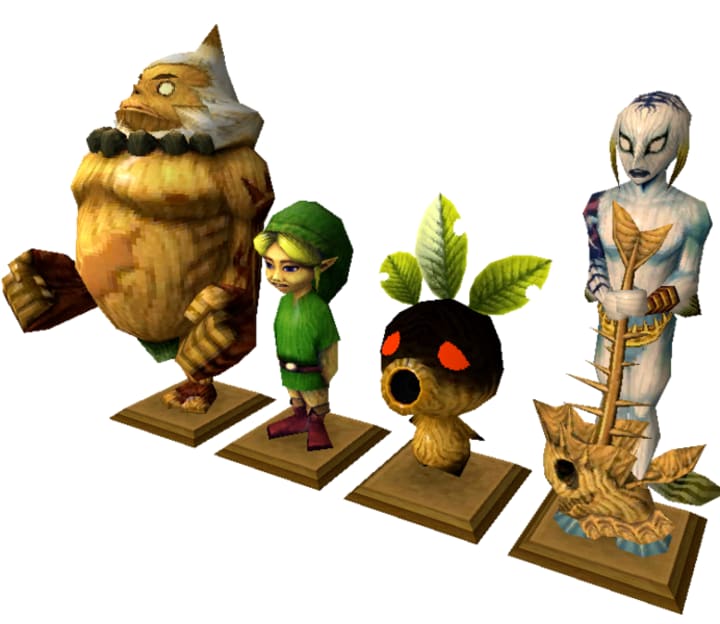
First, look at the statues themselves. The Deku, Goron, and Zora ones can been seen as representing the three spiritual stones. As for Link's statue, it could represent either himself or the Ocarina of Time, which was strictly a Hylian treasure.
But what's interesting is the name of the song itself. An elegy is a mournful/melancholic/plaintive poem, i.e. a funeral song. The emptiness part is already interpretive in a psychological sense. However, another interesting part is that the Japanese version of the song name translates to "Elegy of Exuvia." Exuvia are the exoskeleton that insects leave behind when they molt; Link is literally leaving a part of himself behind here.
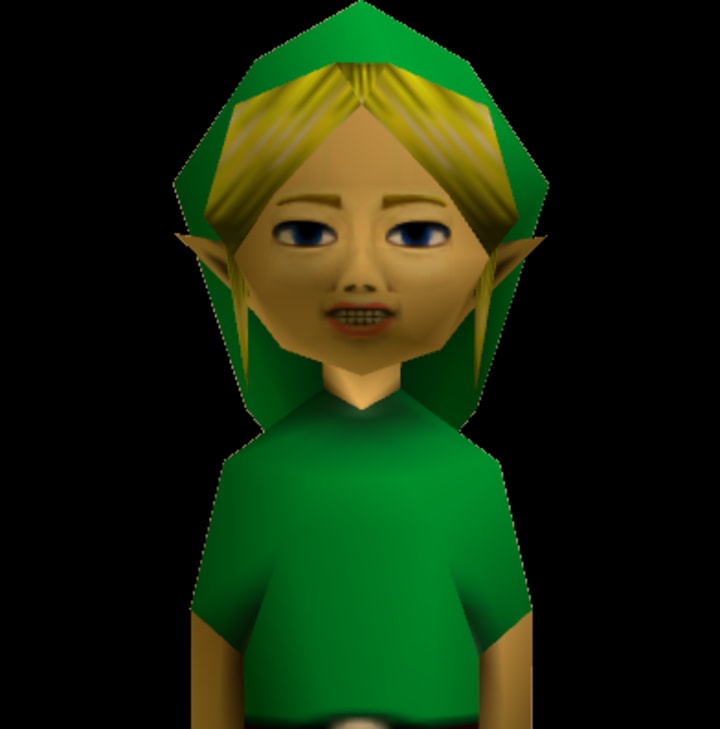
Now let's look at the Stone Tower Temple. At one point, you need to literally turn the world upside down, not unlike what Link figuratively did in Hyrule.
And then we get to the bosses- Twinmold.
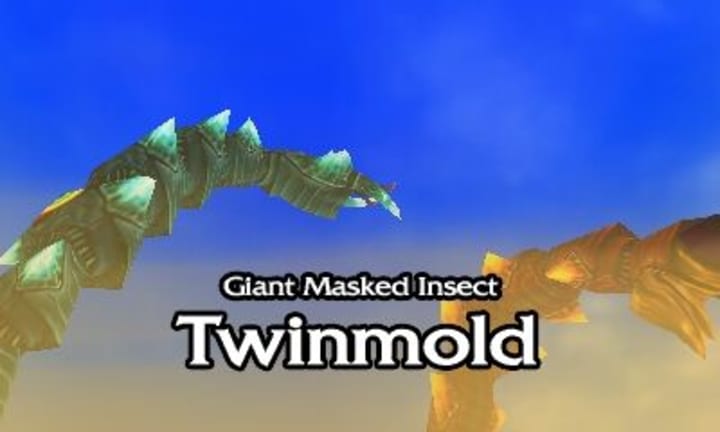
Oh look. Insects. Another connection to the Elegy of Exuvia and Link leaving bits of himself behind.
These guys are the ones responsible for all the curses in the valley, are fought in a desert area that you just suddenly end up in, and can only be taken down when you put on a mask that makes you a giant. Easily representative of both Ganondorf infiltrating Hyrule from his desert kingdom and Link only able to save the day after he gets an adult body.
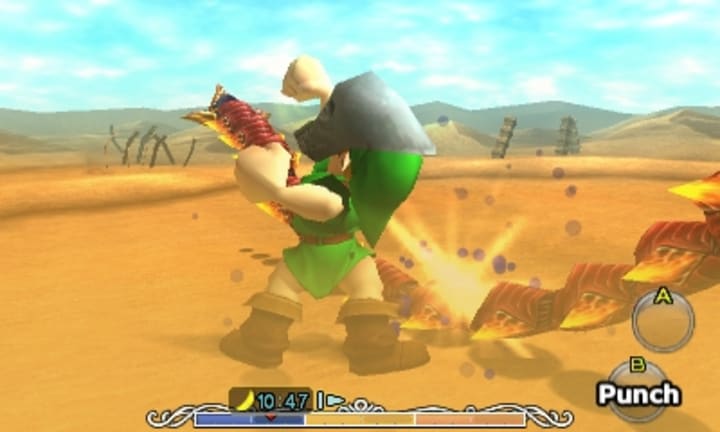
But the absolutely creepiest part here actually has to do with a sidequest involving one Captain Keeta. A giant skeleton who swore to protect the local royal family in life, his restless spirit can only be calmed by Link.
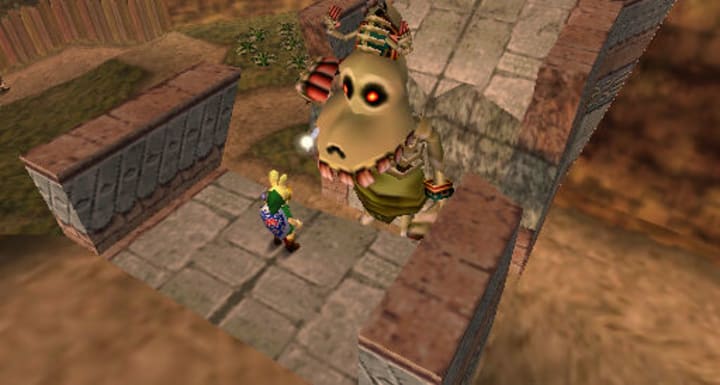
Not really too creepy...until you remember this one guard back in OoT.
Should Link go into a side alley after witnessing Ganondorf chase Zelda and Impa away, he will encounter a guard that gave his life to allow Zelda to escape.
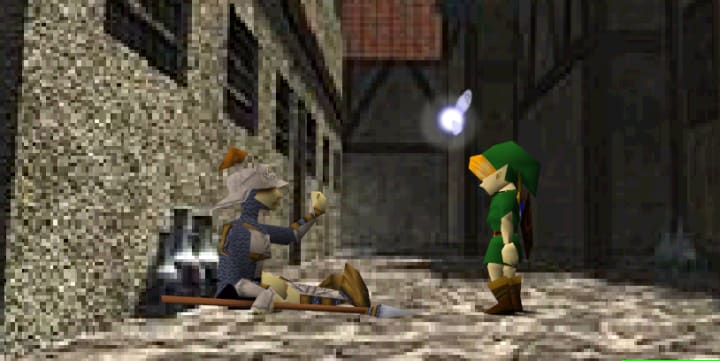
This connection is further solidified by the fact that, when facing into both Hyrule Castle and Ikana Valley, both Keeta's and this guy's area are in the same direction...
EXHIBIT F: Clock Town Represents Kakariko Village and Link’s Sanity

While not necessarily a huge chunk of Link's past, OoT's Kakariko Village actually acts as a bit of a constant peace factor in his adventure. When Hyrule went to hell in a hand basket, refugees from all over took shelter there. And aside from a fire that happened right before going into the Shadow Temple, nothing too destructive really happened at the village. So really, if there's a place to equate with relative peace during Ganondorf's reign, it's Kakariko Village.
Such is the case with Clock Town, which (aside from the moon, anyway) isn't really having as drastic problems as other places in Termina. Clock Town even goes as far as sharing Kakariko Village's mechanical centerpiece (the clock tower in Clock Town and the windmill in Kakariko) and even construction team/chicken woman.
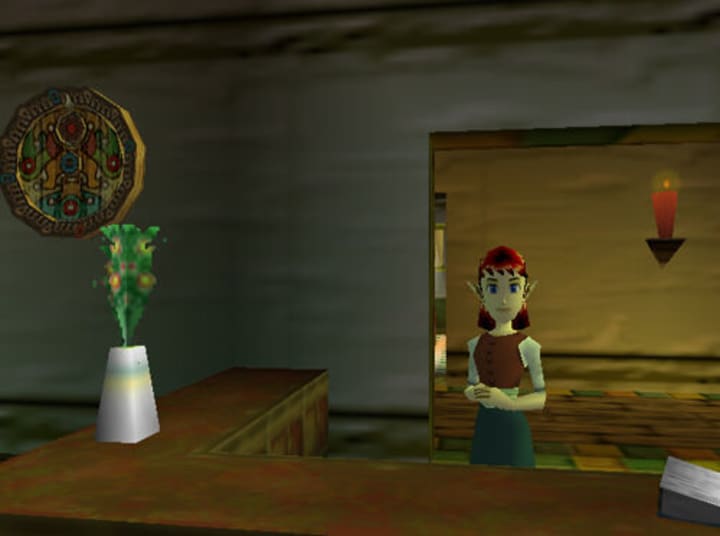
Interestingly enough, this is the place where you enter Termina and learn the Song of Healing. These acts could be seen as part his subconscious campaign of healing the rest of his mind. He's starting from the most intact corner of his psyche and- armed with a song that can heal- going outwards to fix himself.
But that isn't to say that troubled bits of Link's mind haven't crept in. Case in point, the notorious Anju and Kafei sidequest.
If any part of Majora's Mask was a representation of Link's complex relationship with age, it's Kafei. Kafei himself is an inversion of Link; where Link was a child who suddenly became an adult, Kafei was an adult who suddenly turned into a child. In a way, he's a direct reflection of Link's trauma; he's an adult in a child's body, just like how Link had to internally mature so soon. But Link spends a huge chunk of the game restoring Kafei's relationship with Anju and even get his (Kafei's) life back. This shows Link that he can possibly do the same, even if only by a fraction.
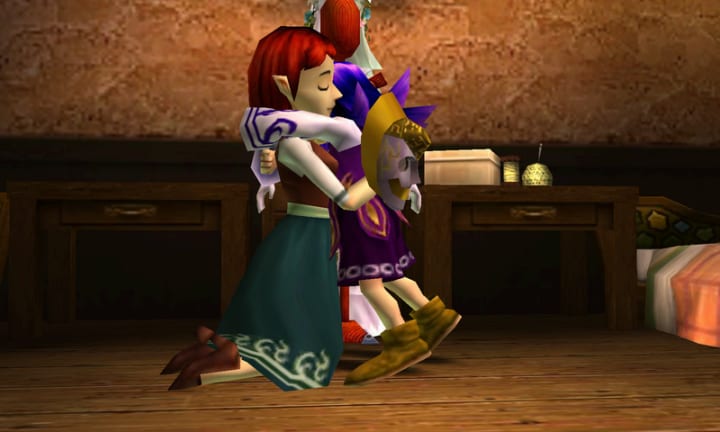
Too bad this is a first place that the moon's going to destroy. Which actually makes sense because–
EXHIBIT G: The Moon Represents Ganondorf

As trippy as this game's tone is, one begs the question– why does the moon have a face?
It's a really scary face too. Those sunken vibrant eyes, grimace, and long nose actually seem a little familiar. I wonder where OH MY GOODNESS!
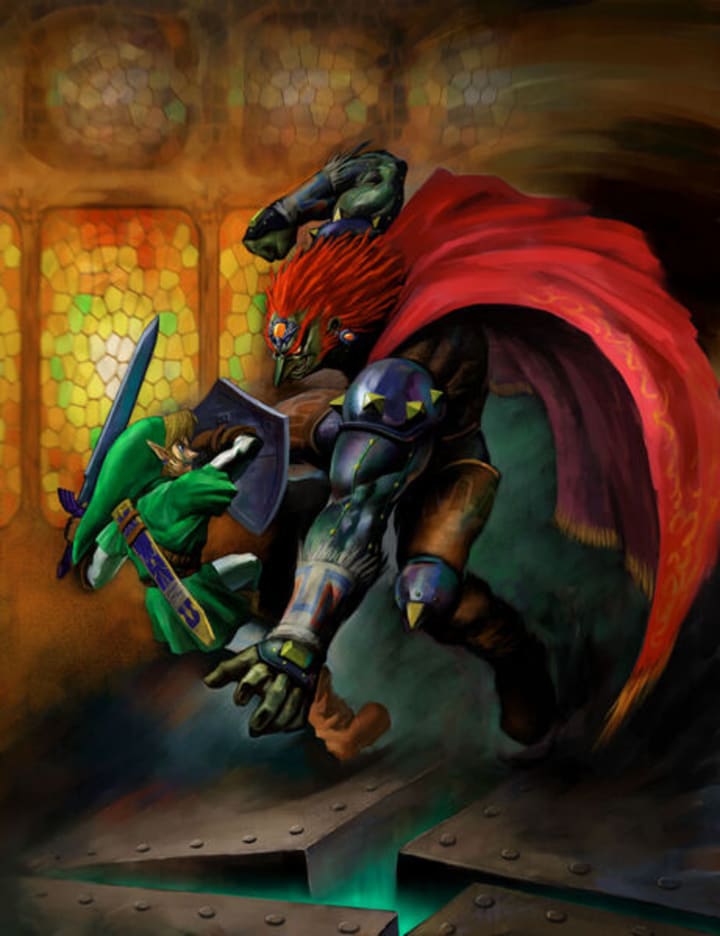
That's right. The moon and the very threat it carries is symbolic of none other than Ganondorf.
Ganondorf was the main reason Link was traumatized in the first place, and now the representation of him is threatening to completely annihilate the rest of Link's mind. A connection that is fully driven home when you consider that the original symbol for the Gerudo was a moon.
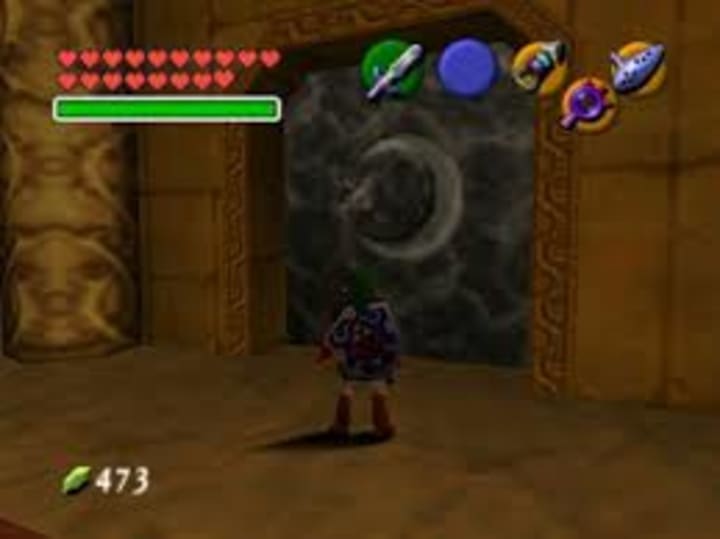
But the symbolism doesn't stop there. Majora's moon is holding the manifestation of the very thing Ganondorf stole: Link's innocence.
Inside the moon is a field with a large tree and surrounded by kids happily playing. Easily reminiscent of Link's days with the childlike Kokiri and a still-living Deku Tree. There's even this one kid that's sticking by himself, just as Link did.
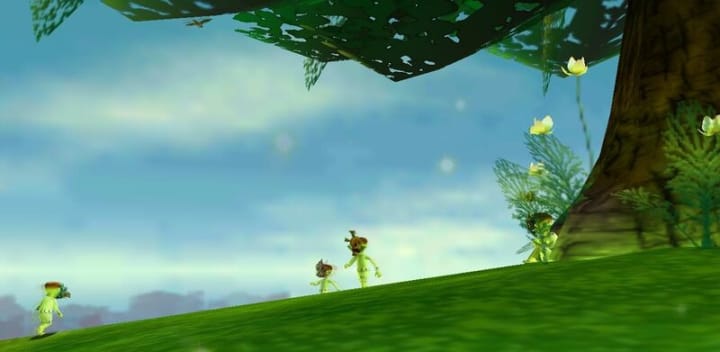
But the children are wearing the masks of the game's bosses; the very manifestations of Link's trauma. Ganondorf has ruined even the most hallowed memories of Link's past. And to earn the favor of these kids, Link has to give up his masks.
This segues into the point that-
EXHIBIT H: Masks Symbolize Growing Up

Why does this game center around masks? Is it just the game's "thing?" Like boats or wolves or trains?
...Well, yeah. In real life, probably.
That aside, consider this: in both N64 Zelda games, you can only use masks as a child. And again, much of Link's issues probably stem from the fact that he had his childhood stolen from him and was forced into a warped/pseudo form of growing up.
So Link hoards masks now. Does that mean that he's clutching onto his childhood and refusing to let go, damning any possibility of ever actually growing up?
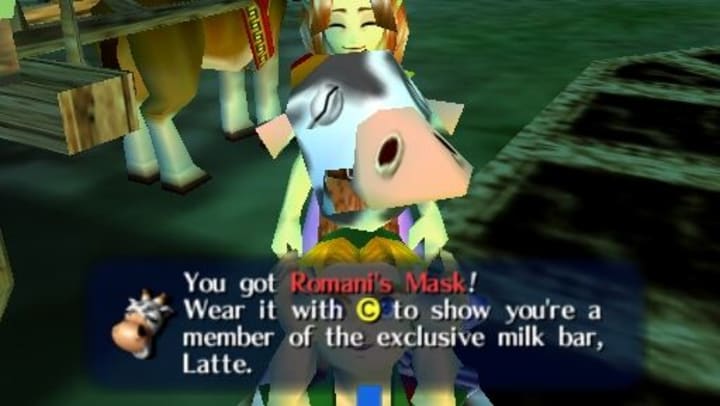
But Link doesn't hoard the masks. Not at the very end, anyhow.
Instead, he trades each and every one of them to the moon children; the manifestation of his tarnished childhood. Masks that he earned by helping people, many of them reminiscent of those he encountered in OoT. Each of these tasks are him making a little bit more peace within a mindscape made real and gone wrong. Even when his actions are rewound whenever he goes back to the Dawn of the First Day, he keeps those masks. Time travel can no longer take away his inner peace.
And his reward for this physical representation of making peace with his pain? The Fierce Deity Mask, which turns him into an amped-up version of his adult form and a manifestation of all of Termina's collective emotions.
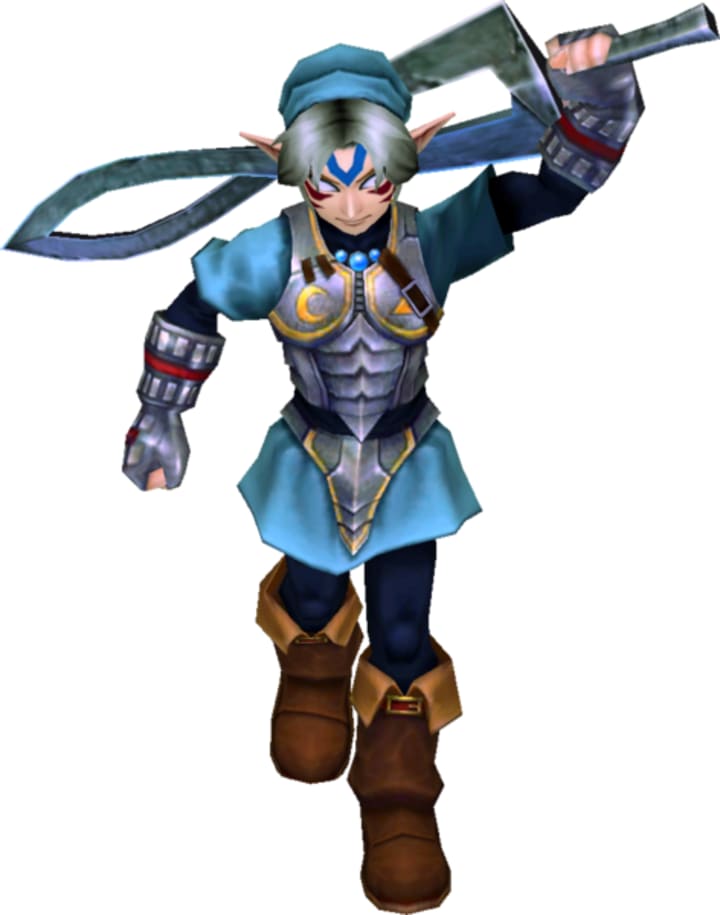
And with this new power, Link is able to defeat Majora/Skullkid for good.
Oh, speaking of–
EXHIBIT I: Skull Kid/Majora Is The Anti-Link

The Skull Kid. As an enemy in OoT, he lived in the Lost Woods and attacked any adult he saw. In Majora's Mask, he was abandoned by four giants who decided that helping Termina was more important than the Skull Kid's happiness. After stealing the titular mask, Skull Kid decides to destroy Termina via the moon as a means of payback, though even then he's being controlled by the mask. And during this campaign, he even has a dark version of the fairy Link joins up with.
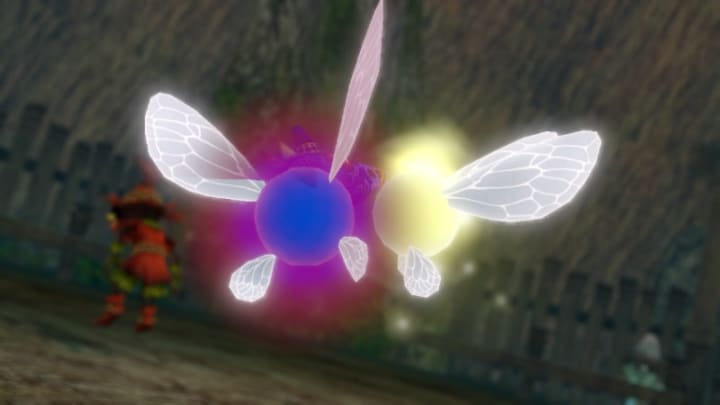
So, obviously, the Skull Kid can be seen as the antithesis of Link and his psychological recovery. He's an archetype that lives in the woods and violently rejects adulthood; a concept that probably seems painful to Link after what he's been through. And the Skull Kid himself is motivated not (just) by revenge against a world that hurt him, but by heartbreak via abandonment. The world had failed him, just as it failed Link. Bigger, more powerful beings are putting the needs of the many over the needs of...well, him. If self-destruction or complete madness can take a form, it would be as a Skull Kid.
Or rather, it would be as Majora's Mask.
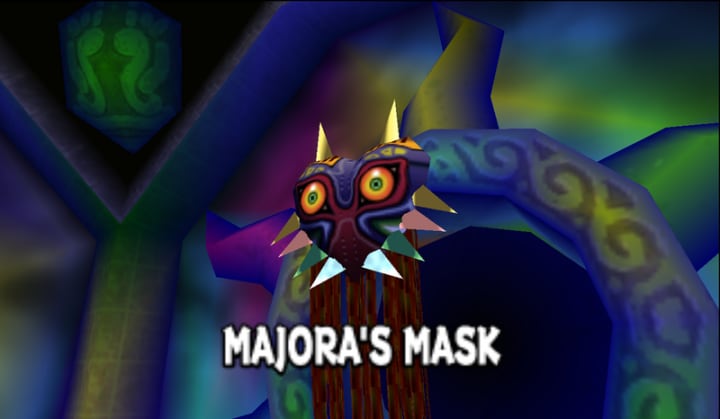
Look at the mask itself. It's shaped like a spiky heart; arguably the very shape of emotional pain. Left to his own devices, the worst Skull Kid would've done was sticking to stealing from people.
But then the mask takes over. Drives Skull Kid to do horrible things and gives him the means of doing so. This is Link's anguish taken to its absolute worst place.
But in the end, Link defeats it. He summons the four giants- each freed by an act of healing- to stop the moon/Ganon metaphor from destroying the world/his mind. He takes an empowered adult form to defeat Majora himself; be it his Mask, Incarnation, and Wrath forms. And in the end, he even forms a kinship with the dark side of himself.
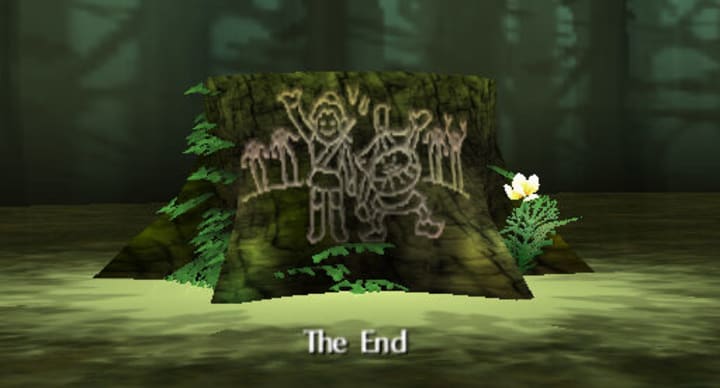
In Conclusion
Okay, obviously, this is likely not canon. (Unless this is a dream like Nintendo says...But even then, that timeline's confusing, man.) Analysis aside, this is just a theory.
But that's the beauty of Majora's Mask. It's just trippy/ambiguous enough to allow for different interpretations, each one more psychological than the last. Nintendo probably didn't intend for that to happen (given that they only had a year to make a send up to one of the greatest games of all time and therefore had more pressing issues to tend to). But it's still nice to see what people come up with...
Also, please don't sue me for this, Nintendo. It's fair use, I swear.
(Also, also feel free to tip ya girl down below...Sorry to be that person.)




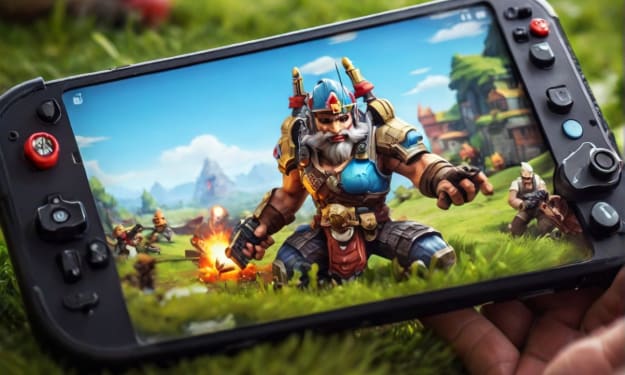

Comments
There are no comments for this story
Be the first to respond and start the conversation.